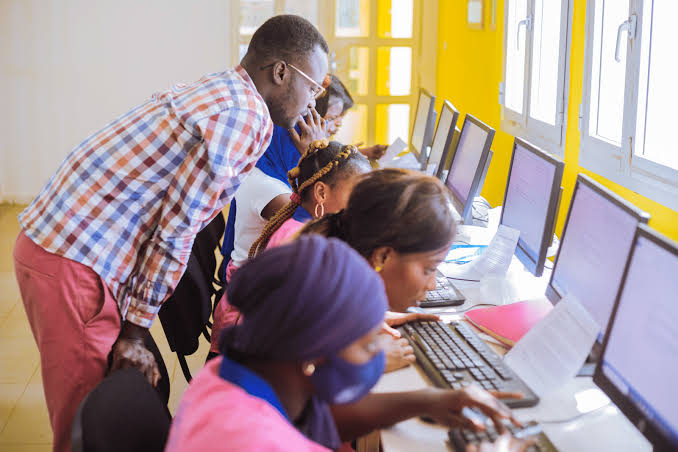By Eugenia Kindaruma
Beneath Kenya’s bustling cities and across the quiet resilience of our rural landscapes, a quiet revolution is unfolding. Against all odds the nation’s youth, vibrant, tech-savvy, and a fiercely innovative lot is rediscovering an ancient truth based on the adage that maintains that prosperity thrives in community.
To that end the key lies in harnessing the transformative power of community-based resource sharing networks. These collaborative models, blending indigenous wisdom with digital tools, offer a compelling blueprint for sustainable wealth creation. This is a compelling starting point for our youth to walk the path of prosperity.
For generations, African communities understood that survival and success were collective endeavours. The concept of communal effort—best captured in our ‘Harambee’ sensibility—is embedded in the social fabric. Today, this ethos is being actively reimagined for the digital age. As the World Bank notes, Kenya’s significant progress in areas like electrification (jumping from 25% to 75% access) and digital agriculture—with platforms registering 6.4 million farmers—demonstrates the power of coordinated, inclusive approaches. These are not merely government projects but a clear signal of the immense potential of structured sharing.
Youth across Kenya are already tapping into the intimated potential. Consider the informal gig worker collectives emerging in urban centres. Platforms like LYNK connect skilled artisans—carpenters, mechanics, and domestic workers—with clients making the linkage magical. Young mechanics pool specialised tools, reducing individual capital burdens. Groups of riders for delivery services like Sendy share market intelligence on high-demand routes or best-paying platforms, negotiate better group insurance rates, or create emergency funds to cushion members against shocks like motorbike repairs or health issues. This vibrancy mirrors the essence of Community-Based Natural Resource Management (CBNRM) championed by WWF Kenya, where communities collectively manage, access, use, and crucially, benefit from shared assets, ensuring incentives for conservation outweigh costs.
The digital revolution acts as the accelerant. Mobile money (M-Pesa) is the undisputed backbone that enables instant, low-cost transactions within networks. M-Shwari’s staggering success highlights the hunger for accessible, community-integrated financial tools.
Today, online groups facilitate peer-to-peer training, from coding bootcamps organised via WhatsApp to YouTube channels where young farmers share climate-smart techniques gleaned from projects like the Kenya Climate Smart Agriculture Project. Digital platforms enable the shared use of high-cost equipment such as a photographer’s studio, a 3D printer, a greenhouse tunnel, or even agricultural machinery among networks of young entrepreneurs, dramatically lowering entry barriers. Still, collectives like those nurtured by the Africa Youth Trust aggregate produce from young farmers or crafts from artisans, achieving economies of scale and negotiating better prices with bulk buyers than individuals ever could.
Kenya’s journey in shared networks powered by technology finds powerful echoes worldwide. South Africa’s remarkable Renewable Energy Independent Power Producer Programme (REIPPPP) stands as an excellent example. Facing an energy crisis threatening its entire industrial base, the government did not just build more state-owned power plants.
Instead, it radically changed regulations to allow private producers, from large firms to community co-operatives, to generate renewable energy—f mainly solar and wind—and sell it back to the grid, backed by government guarantees.
The result? Over $13 billion in private investment flowed in, creating over 82,000 “job years,” and fostering local ownership while delivering some of the world’s cheapest green energy at around three US cents per kilowatt-hour. But this was not just about megawatts. It was about creating a shared energy resource ecosystem where communities and private capital, supported by enabling policy, collectively built resilience and prosperity. It demonstrates the explosive potential when communities are empowered as active resource managers and beneficiaries and not passive recipients.
For community resource sharing to fulfil its promise for Kenya’s youth, a multi-faceted approach is crucial. We need to encourage integrating practical education on responsible credit use, savings, investment, and online safety into youth programmes. Also needed is the strengthening of physical community hubs, be they innovation centres, resource libraries, or cooperative offices supported by robust digital platforms for coordination, communication, and transactions. Besides, the government ought to create a nurturing environment to foster resource-sharing collectives, and provide access to affordable start-up capital or guarantees.
Kenya’s youth bulge is not a ticking time bomb, but an unprecedented reservoir of potential. By consciously reviving and re-engineering the power of the collective—where tools, knowledge, markets, and even risks are shared—young Kenyans can build an economy resistant to shocks and rich in opportunity. Like individual threads gaining strength when woven together, community-based resource sharing networks offer more than just survival. They provide the very loom on which a more prosperous, equitable, and resilient future for Kenyan youth can be woven.
The model is tried, tested by time, and validated globally. It is time for Kenya’s young generation to claim it, adapt it, and scale it for their tomorrow.
Kindaruma is a Meru-based leadership trainer and educationist.



